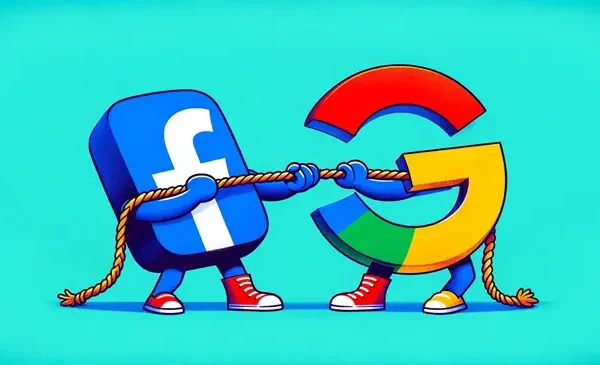The brainstorming technique is commonly applied in the business and university environment to generate ideas, through the exchange of information within a department or team.
However, many of the practices that are carried out can help freelancers and businesses of any size to get out of a time of creative stagnation.
If you have a Blog, te dedicas al diseño gráfico, tienes un pequeño negocio de moda o tu profesión conlleva desarrollar un procedimiento creativo o artístico, este artículo te interesa.
You will have times where everything that comes to mind ends up turning into a brilliant business idea. But, unfortunately, you will also be blocked on more than one occasion, so attending a group session of these characteristics can get you out of more than one trouble.
Brainstorming meaning and utilities
Group techniques like brainstorming (or brainstorming) are great practices that can be done at a variety of levels, from a full marketing department to a small group of "colleagues."
Let's see specifically what brainstorming is and what it means, as well as discovering when is the best time to put it into practice.
What is Brainstorming?
This concept was created by Alex Faickney Osborn in 1939 and its basis does not focus so much on brainstorming, as on identifying an obstacle and providing solutions, using the creative mind.
El Brainstorming o lluvia de ideas, es una técnica que se usa para generar ideas a través la participación y el pensamiento creativo, que surgen de un grupo de persons.
Therefore, brainstorming is a technique that seeks to solve an obstacle with the help of creative cooperation and collaboration.
When to complete this technique?
Group techniques like brainstorming (or brainstorming) are great practices that can be done at different levels, from a full marketing department to a small group of 'colleagues'.
Even when a reason is not necessary to implement brainstorming, these types of techniques are very recurrent when in a business or within a work team the need arises to:
- Review the cause of an obstacle.
- Propose alternative or innovative solutions.
- Promote group and individual imagination.
- Solve a latent obstacle.
- Fight monotony.
- Create a stress-free work environment.
- Unleash the imagination of teams.
Brainstorming activities to be carried out in a session
El brainstorming es una técnica que se pone en práctica entre un grupo de personas o equipo de trabajo para llevar a término una organización, un establecimiento de roles y un seguimiento del procedimiento, con el target de conseguir un buen resultado.
Important: The figure of the facilitator is essential in a group brainstorming session, since the discussion or exchange of opinions in a team usually generates insecurities among the most reserved members, as well as certain tensions or conflicts if the procedure is not carried out in moderation.
These are the main brainstorming activities that are most effective in these group sessions:
➽ Generation of heterogeneous opinions
The team should be heterogeneous so that different opinions are contributed. A good idea is to include outsiders who can give totally different points of view in these practices.
➽ Presentation of the participants
If the participants do not know each other beforehand, it is essential to introduce them to break the ice. At the beginning it is also a good time to expose expectations to generate debate and promote the first contribution of ideas.
➽ Creation of a relaxed atmosphere
Promote good humor in a fun way that allows participants to relax and unleash their imagination. At the same time, it would help a lot if these practices are carried out in a different environment than usual, and even special.
➽ Take a walk or take a breath
It is highly recommended that these practices be carried out in a different environment than usual, and even special. To avoid tension or blockages, it is good to give the team free rein to go for a walk or take the air.
➽ Discussions based on specific questions
For example, asking good questions leads to a greater number of questions and reflections on the part of the team. However, if this practice is carried out within a company, the rules and the usual decision-making procedure should not be ignored.
➽ Compilation of the best ideas without discrimination
When compiling the best ideas, if it consists of a session of several participating groups, it is ideal for each group to select its own 3-5 best ideas, so that no one is discriminated against.
➽ Make everyone feel comfortable avoiding criticism
These sessions when carried out among a large number of participants can generate insecurities among the most reserved.
Therefore avoiding criticism or doing it in small subdivided groups can help some participants to feel more comfortable and to keep brainstorming active.
Other group techniques to promote imagination
At the same time that the participants carry out all these activities in a brainstorming session, there are other techniques to take into account to apply in these group meetings:
- Words are unnecessary: This is a fairly simple technique that produces a large number of original ideas by describing the advantages of a concept or product without actually naming it, in a way that is equivalent to the board game “Taboo”.
- Lateral thinking: This technique is also applicable in everyday life (individually or in a group) as an engine of change, since it has the objective of solving an obstacle through the use of creativity. Conventional solutions are obviated, provoking thought towards other unusual alternatives.
- Six Thinking Hats: Based on the book by Edward Bono, this technique can be combined with lateral thinking and is applied in a group way from the imaginary adoption of “roles” or “colored hats” that allows us to perceive an obstacle from different perspectives.
- Mental maps: This technique developed by Tony Buzan encourages the generation of new ideas from the representation of ideas or words through symbols or diagrams, facilitating the extraction of information and reflection.
- Synectic: This is a group technique that is usually applied alternatively to Brainstorming and is similar to lateral thinking, since it also seeks to solve a given obstacle. I leave you a link to organize a synectic session.
Brainstorming: Examples
I am going to mention two brainstorming techniques below, with specific examples, so that you understand how they are applied and their effectiveness.
➽ 5 Whys technique
It consists of asking five times in a row the why of something in order to summarize the problem. Let's take the example of a logo. The problem is that the logo does not convey the essence of the brand.
The questions can be:
- Why doesn't it convey the essence of the brand? - Because it does not convey the values of the brand.
- Why are the values of the brand not transmitted? - Because it doesn't connect with the audience.
- Why not connect with the audience? - Because its design is out of date.
- Why is your design outdated? - Because it hasn't been changed for 10 years.
- Why hasn't it been changed for 10 years? - Because I was not aware of the importance of rebranding.
After all these questions, we came to the conclusion that the fault is that the redesign of the logo has not been given importance. And therein lies the crux of the matter.
➽ Forced ranking
This technique is great when you have to select from several complex ideas. For example, if the objective of this brainstorming is to generate ideas for a creative campaign of a new drink that Coca-Cola is going to launch, with this technique, the mechanism is as follows:
- First, you have to reduce the number of ideas to 10 (if it is 5 better).
- Write them in a table, in rows.
- In the columns put the criteria that will help to select the best idea, according to the objective.
- Each participant puts an assessment on each criterion (if there are 10 ideas, the minimum score will be 10).
- At the end the scores are added and the one with the highest rating is chosen.
CONCLUSIONS:
Brainstorming is ideal for specific company teams and departments that simply want to differentiate themselves from their competition through imagination and innovation.
Therefore, if you want to impact your clients, conducting these group sessions will allow you to solve their specific problems with creative ideas; many of them unexpected and brilliant.
I hope that if you had doubts about the brainstorming activities that are carried out in the sessions, now you have solved them and are encouraged to participate in them ;-).
Have you ever attended or held a brainstorming session? What other techniques would you recommend?







